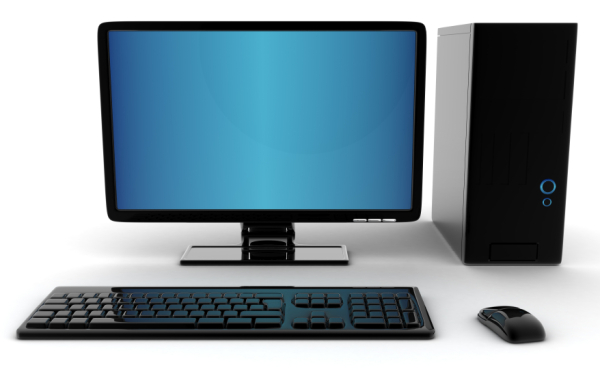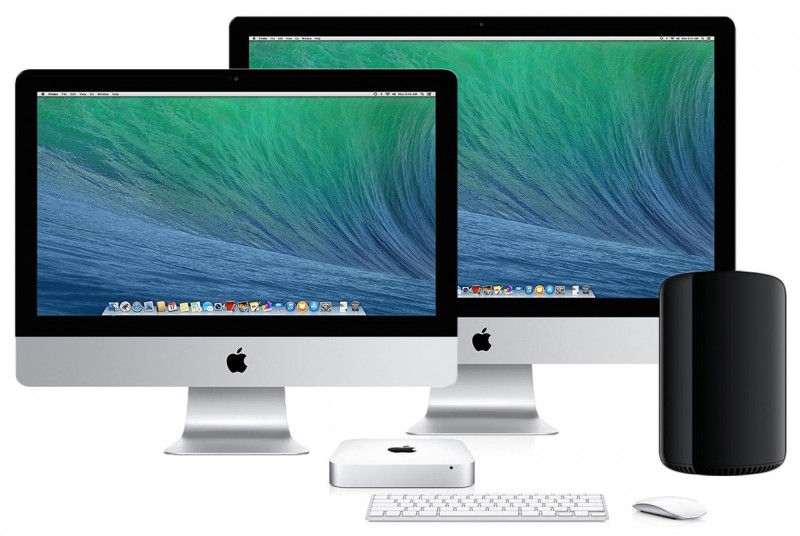| Source:- Google.com.pk |
Modern desktop replacements generally perform better than traditional laptop-style computers as their size allows the inclusion of more powerful components. The larger body means more efficient heat-dissipation, allowing manufacturers to use components that would otherwise overheat during normal use. Furthermore, their increased size allows for greater expandability and features, as well as larger and brighter displays. However, these advantages generally come at a price premium, with many computers in this class costing as much as two desktop computers with similar specifications.
Using a laptop form factor, however, desktop replacements still often suffer from limitations similar to those of more mobile laptops. They usually lack the ability to accept standard PCIe expansion cards, limiting their expandability somewhat. While desktop replacements can offer better cooling than other laptops, they rarely dissipate heat efficiently enough to allow for high-end desktop-class components, and thus may not reach the same performance levels as desktop computers.
Desktop replacement computers are, with a few exceptions, difficult to upgrade compared to desktop computers, with many of their major components (such as the display) integral to the design of the machine, and others (such as the CPU and GPU) often being hard to access and replace.[5] A small segment of desktop replacements do not include a battery as a standard feature, while some do not include ExpressCard support. They have the same limitations on serviceability as laptops, and can rarely use identical components to a desktop computer.Hewlett-Packard this week introduced two new notebooks using desktop Pentium 4 processors running at speeds up to 2.8GHz, a jump of about 400MHz over previous models.
Toshiba, which helped start the trend, Dell Computer and Sony are all expected to follow soon with their own next-generation desktop notebooks. Dell and Sony, which each offer one or two Pentium 4 models, are expected to expand their use of the chip.
Emboldened by the early success of these machines--models like Toshiba's Satellite 1905 or HP's Compaq Presario 1500--manufacturers are convinced they have found a legitimate new market segment fitting neatly between notebooks and desktop PCs. Indeed, consumers increasingly have been moving from desktops to notebooks.
But for manufacturers, the appeal of using desktop Pentium 4s in a notebook has a lot to do with cost.
"The problem is that the mobile (processor) prices are so much more expensive than the desktop parts, hundreds of dollars more," said Kevin Krewell, senior editor at the Microprocessor Report.
The fastest Pentium 4 designed for notebooks, Intel's 2.2GHz Pentium 4-M, lists for $562. The desktop version of the same chip costs $193, while Intel's 2.53GHz Pentium 4 lists for $243 and its 2.8GHz for $401.
By using the desktop Pentium 4s, manufacturers can also offer a middle ground between desktops and notebooks, creating a machine that is faster than a traditional notebook, but less expensive.
There are trade-offs, however. Notebooks using desktop Pentium 4 chips tend to be much larger and weightier than those using Intel's Pentium 4-M mobile chip, requiring consumers to compromise on weight and also battery life. To accommodate larger batteries and the desktop chips--which produce more heat and consume more power than notebook chips--manufacturers must use larger chassis. Most desknotes, as a result, range in weight from 7.5 to nearly 10 pounds, while Pentium 4-M notebooks tend to weigh around 6 pounds, and as little as 5.5 pounds.
Still, many consumers, looking to trade up from a desktop to a new notebook, have shrugged off weight and battery life in purchasing models like the Satellite 1905 because of the price and mix of features, which included a faster processor than available elsewhere--in this case a 2.4GHz Pentium 4--a large 15-inch screen, and DVD and CD burners for a price around $1,800 to $2,000.
The desktop notebooks typically start around $1,400. Most sell for less than $2,000, while similar notebooks with Pentium 4-M chips start higher, around $1,500, and can range up in price past $3,000.
Using a laptop form factor, however, desktop replacements still often suffer from limitations similar to those of more mobile laptops. They usually lack the ability to accept standard PCIe expansion cards, limiting their expandability somewhat. While desktop replacements can offer better cooling than other laptops, they rarely dissipate heat efficiently enough to allow for high-end desktop-class components, and thus may not reach the same performance levels as desktop computers.
Desktop replacement computers are, with a few exceptions, difficult to upgrade compared to desktop computers, with many of their major components (such as the display) integral to the design of the machine, and others (such as the CPU and GPU) often being hard to access and replace.[5] A small segment of desktop replacements do not include a battery as a standard feature, while some do not include ExpressCard support. They have the same limitations on serviceability as laptops, and can rarely use identical components to a desktop computer.Hewlett-Packard this week introduced two new notebooks using desktop Pentium 4 processors running at speeds up to 2.8GHz, a jump of about 400MHz over previous models.
Toshiba, which helped start the trend, Dell Computer and Sony are all expected to follow soon with their own next-generation desktop notebooks. Dell and Sony, which each offer one or two Pentium 4 models, are expected to expand their use of the chip.
Emboldened by the early success of these machines--models like Toshiba's Satellite 1905 or HP's Compaq Presario 1500--manufacturers are convinced they have found a legitimate new market segment fitting neatly between notebooks and desktop PCs. Indeed, consumers increasingly have been moving from desktops to notebooks.
But for manufacturers, the appeal of using desktop Pentium 4s in a notebook has a lot to do with cost.
"The problem is that the mobile (processor) prices are so much more expensive than the desktop parts, hundreds of dollars more," said Kevin Krewell, senior editor at the Microprocessor Report.
The fastest Pentium 4 designed for notebooks, Intel's 2.2GHz Pentium 4-M, lists for $562. The desktop version of the same chip costs $193, while Intel's 2.53GHz Pentium 4 lists for $243 and its 2.8GHz for $401.
By using the desktop Pentium 4s, manufacturers can also offer a middle ground between desktops and notebooks, creating a machine that is faster than a traditional notebook, but less expensive.
There are trade-offs, however. Notebooks using desktop Pentium 4 chips tend to be much larger and weightier than those using Intel's Pentium 4-M mobile chip, requiring consumers to compromise on weight and also battery life. To accommodate larger batteries and the desktop chips--which produce more heat and consume more power than notebook chips--manufacturers must use larger chassis. Most desknotes, as a result, range in weight from 7.5 to nearly 10 pounds, while Pentium 4-M notebooks tend to weigh around 6 pounds, and as little as 5.5 pounds.
Still, many consumers, looking to trade up from a desktop to a new notebook, have shrugged off weight and battery life in purchasing models like the Satellite 1905 because of the price and mix of features, which included a faster processor than available elsewhere--in this case a 2.4GHz Pentium 4--a large 15-inch screen, and DVD and CD burners for a price around $1,800 to $2,000.
The desktop notebooks typically start around $1,400. Most sell for less than $2,000, while similar notebooks with Pentium 4-M chips start higher, around $1,500, and can range up in price past $3,000.
Free Desktop Wallpapers Download Wallpaper Download For Mobile Free Hd for Mobile Free Image Search for Pc Love Hd 3d free For Mobile
Free Desktop Wallpapers Download Wallpaper Download For Mobile Free Hd for Mobile Free Image Search for Pc Love Hd 3d free For Mobile
Free Desktop Wallpapers Download Wallpaper Download For Mobile Free Hd for Mobile Free Image Search for Pc Love Hd 3d free For Mobile
Free Desktop Wallpapers Download Wallpaper Download For Mobile Free Hd for Mobile Free Image Search for Pc Love Hd 3d free For Mobile
Free Desktop Wallpapers Download Wallpaper Download For Mobile Free Hd for Mobile Free Image Search for Pc Love Hd 3d free For Mobile
Free Desktop Wallpapers Download Wallpaper Download For Mobile Free Hd for Mobile Free Image Search for Pc Love Hd 3d free For Mobile
Free Desktop Wallpapers Download Wallpaper Download For Mobile Free Hd for Mobile Free Image Search for Pc Love Hd 3d free For Mobile
Free Desktop Wallpapers Download Wallpaper Download For Mobile Free Hd for Mobile Free Image Search for Pc Love Hd 3d free For Mobile
Free Desktop Wallpapers Download Wallpaper Download For Mobile Free Hd for Mobile Free Image Search for Pc Love Hd 3d free For Mobile
Free Desktop Wallpapers Download Wallpaper Download For Mobile Free Hd for Mobile Free Image Search for Pc Love Hd 3d free For Mobile
Free Desktop Wallpapers Download Wallpaper Download For Mobile Free Hd for Mobile Free Image Search for Pc Love Hd 3d free For Mobile









I’d should talk to you here. Which is not some thing I do! I quite like reading a post which will make people believe. Also, many thanks permitting me to comment! utorrent pro apk android swift
ReplyDelete